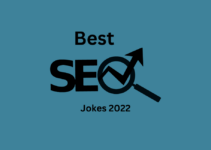We’d all prefer a fast website to a slow website. However, loading time is more than just a personal preference; it also has a significant impact on a site’s success. Read the website load time statistics and trends that every website owner should know.
The longer it takes for a webpage to load, the higher the bounce rate. A high bounce rate indicates to search engines that users do not find the page content useful, and the page’s ranking will suffer as a result. And eCommerce sites will lose customers if their checkout page is even slightly slower than the competitions.
Statistics from numerous studies show that if the average page load time exceeds 3 seconds, abandonment rates skyrocket. High bounce rates indicate to search engines that visitors do not find the website useful, which has a direct impact on ranking.
As if that wasn’t enough, statistics show that shoppers avoid returning to eCommerce sites that have performance issues.

2022 Best Website Load Time Statistics
1) According to one study of 5 million desktop and mobile pages, the average time to fully load a webpage is 10.3 seconds on desktop and 27.3 seconds on mobile.
However, because mobile is still the preferred method of browsing, it is critical to optimize your mobile page speeds as much as possible. In fact, mobile minutes accounted for 77% of all online time in the United States in 2019.
2) The optimal average request count is less than 50 (the number of individual pieces of content required to display the entire web page). Google (https://support.google.com/webmasters/answer/9205520)
3) According to one study of UK consumers, 14% expect pages to load instantly on mobile, while 85% expect pages to load as fast or faster than they do on desktop.
4) In the last 12 months, 60% of mobile internet users have encountered at least one problem while browsing. 73% of mobile users have encountered a website that was too slow to load.
5) Half of those polled said they’d be willing to forego animation and video in exchange for faster load times. (2019, Unbounce)
6) If you run an eCommerce site that earns $100,000 per day, a one-second page delay could cost you $2.5 million in lost sales per year.
7) According to Google’s research, the chance of a bounce increased by 32% when the page load time increased from one to three seconds, and by 90% when the page load time increased from one to five seconds. If a website takes more than 10 seconds to load, the likelihood of a bounce rises to 123%.
8) Because images account for 21% of a total webpage’s weight, it’s critical to ensure that they don’t slow down page speed. Image optimization is a balancing act of finding the smallest file size while maintaining acceptable quality, but it’s not as difficult as it sounds.
9) Pages with load times of 0-2 seconds have the highest eCommerce conversion rates. (2019, Prospect)
10) A lag time of 0.4 seconds can result in a 0.44% decrease in traffic.
11) If a webpage takes more than 4 seconds to load, 75% of users will abandon it.
12) 64% of shoppers who are dissatisfied with their site visit plan to shop elsewhere the next time.
13) According to Google’s research, the chance of a bounce increased by 32% when the page load time increased from 1s to 3s.
14) Ancestory.com increased web page render time by 68%, reduced page bloat by 46%, and reduced load time by 64%, resulting in a 7% increase in conversions.
15) If pages take more than 3 seconds to load, 53% of mobile site visitors abandon the site.
16) 21% of users expect their phone to load as quickly as their desktop.
17) 79% of dissatisfied online shoppers are less likely to buy from the same site again, while 64% would simply buy from a different online store.
18) If your site takes up to 10 seconds to load, the likelihood of a bounce rises to 123%.
Conclusion
In short, speed is critical to the success of a website! Even minor improvements in page load time can help you reduce bounce rates, increase conversion rates, and climb search engine rankings.
However, simply understanding the significance of website speed is insufficient. You now have actionable tips to help you see results on your own pages. Please leave a comment and tell us about your own experience!




